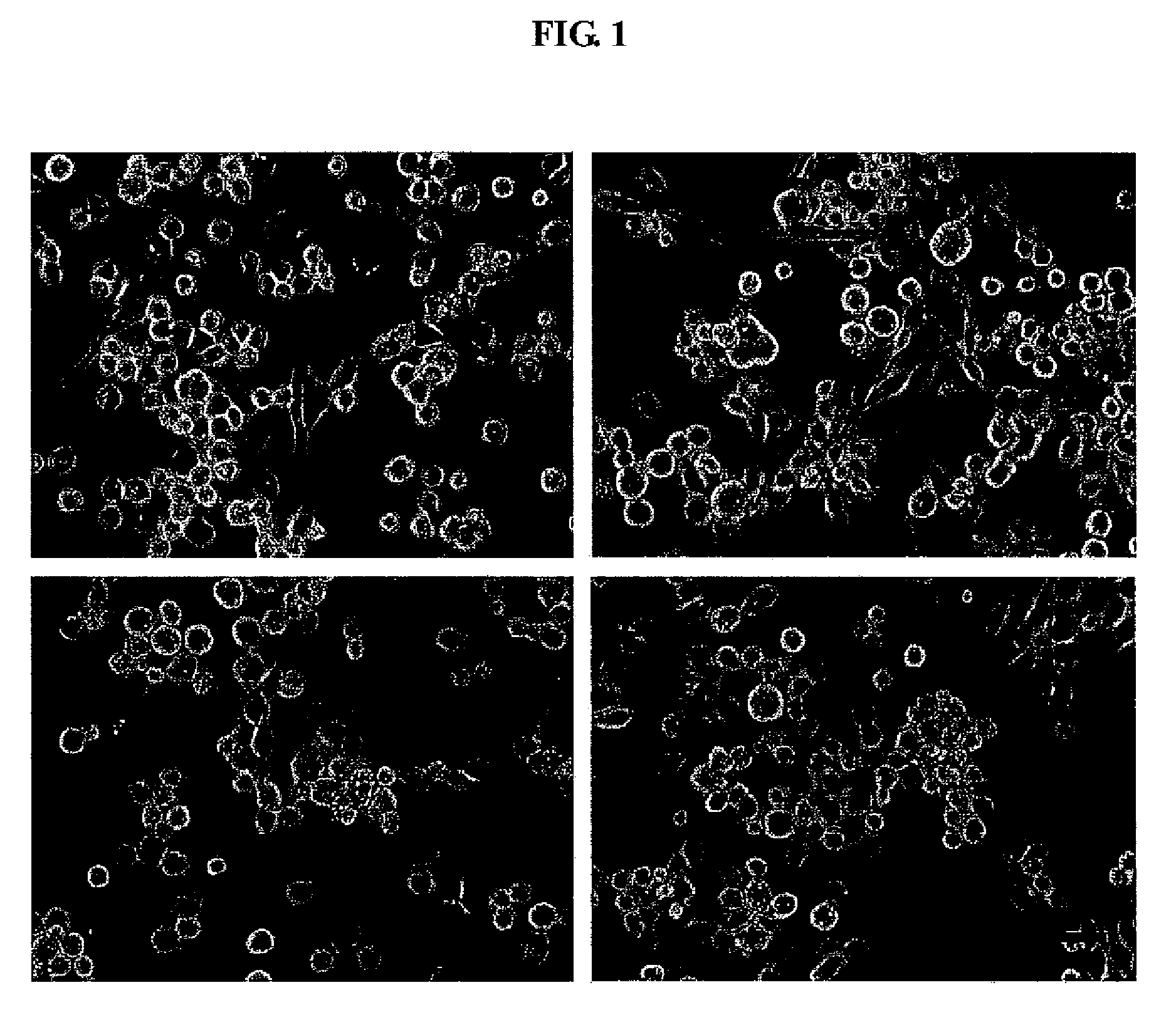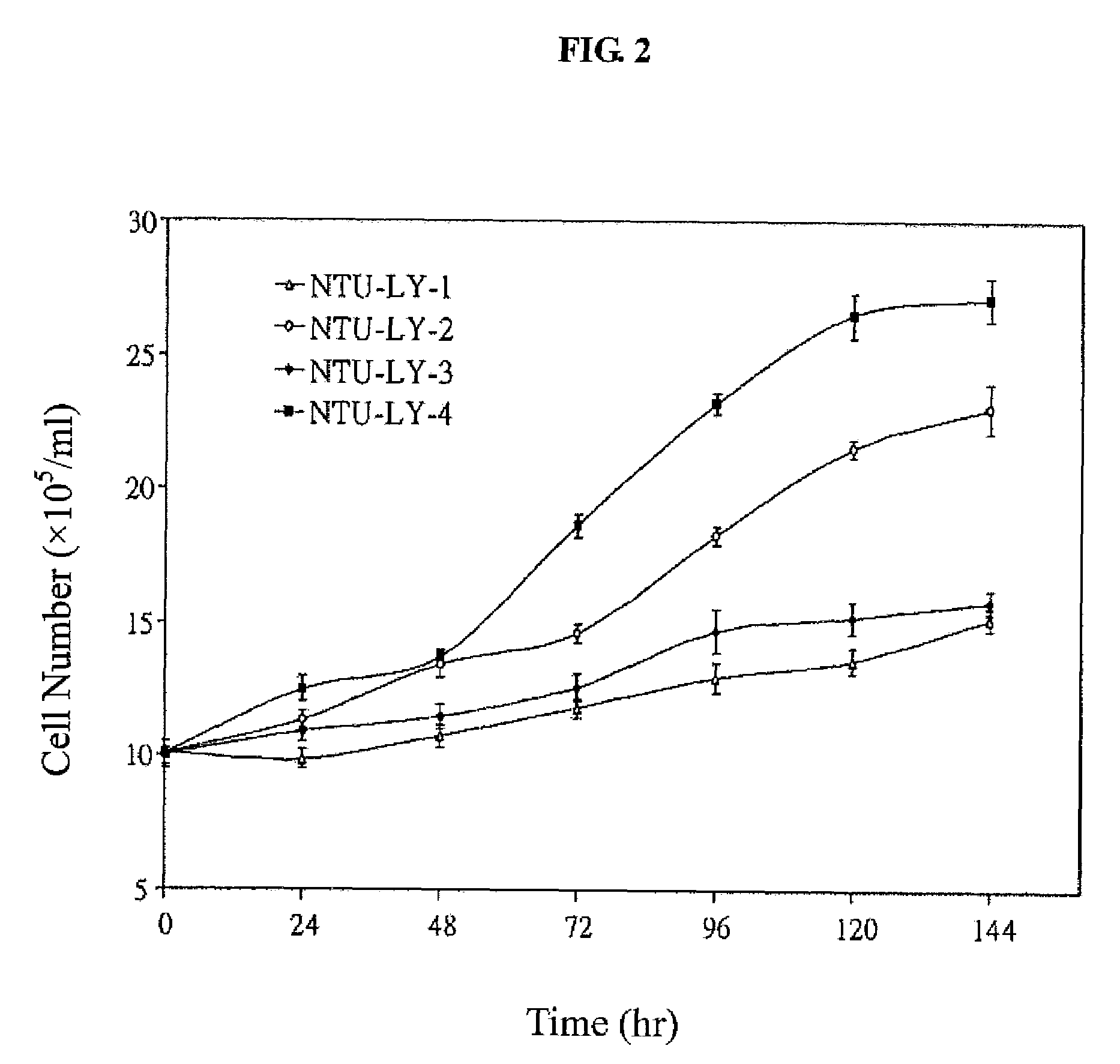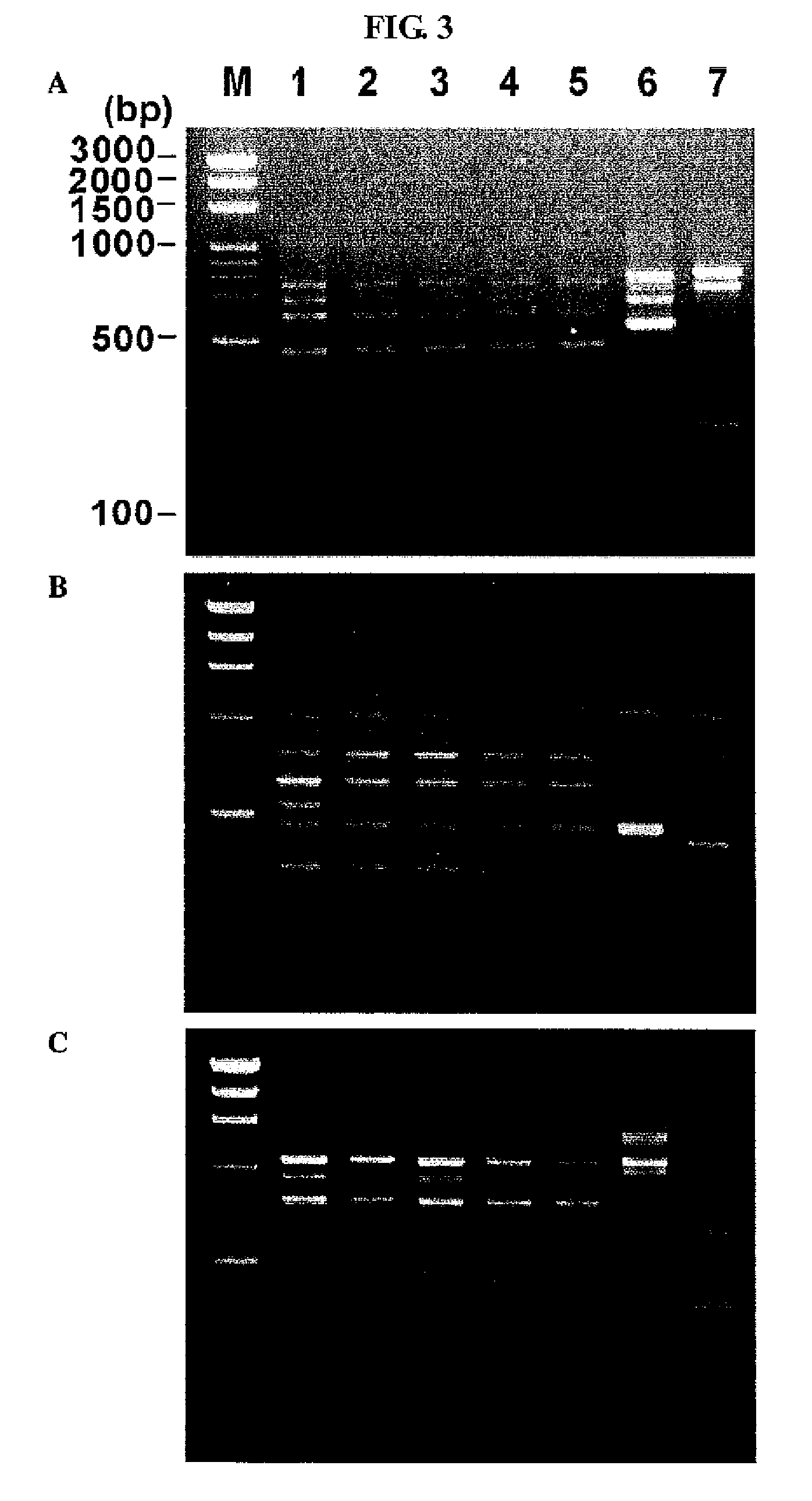Established cell lines from Lymantria xylina
- Summary
- Abstract
- Description
- Claims
- Application Information
AI Technical Summary
Benefits of technology
Problems solved by technology
Method used
Image
Examples
example 1
Establishment of Cell Lines from L. xylina
[0026]The invention isolated 4 cell lines of NTU-LY-1, NTU-LY-2, NTU-LY-3, and NTU-LY-4 from the pupal tissues of L. xylina. Among them, the NTU-LY-4 was deposited in Biosource collection and research center (BCRC) of Food Industry Research and Development Institute (FIRDI, 331 Shih-Pin Road, Hsinchu, Taiwan) under an accession number of BCRC 960290 on May 21, 2007.
(1) primary culture
[0027]Larvae of L. xylina were collected from the low-elevation mountain area located in central Taiwan (Mingjian Township), and reared with leaves of the Formosa sweet gum (Liquidambar formosana) at 25° C. The larvae were allowed to go through the pupal stage. The 2-4-day-old pupae were collected and surface-sterilized with a 10% Clorox solution and 70% iodine alcohol. The pupa was cut with an ophthalmic scissors after the pupa was air dried. The internal tissues from each pupa were picked with a fine forceps and a pipet, and placed in a 25 cm2 flask with 2 ml...
example 2
Cell Morphological Observation
[0030]The morphology of cells from individual cell lines of the NTU-LY-1 to NTU-LY-4 were observed under an Olympus IX-71 inverted phase-contrast microscope. Cell sizes were calculated according to a calibrated magnification factor. Average cell dimensions were determined from measurements of 30 cells. The results are shown in FIG. 1 and Table 1.
[0031]Referring to FIG. 1, the morphology of these 4 cell lines from L. xylina was observed under inverted phase-contrast microscope. Each cell line, NTU-LY-1 to NTU-LY-4, contained 3 cell types: round cells, spindle-shaped cells and giant cells. Slight differences of cell types between these four cell lines were found. Table 1 shows the ratio and the size of each different cell types in the respective cell lines. Among them, NTU-LY-1 contained more giant cells than the other cell lines. NTU-LY-2 and NTU-LY-4 were both typical of spindle-shaped cells, while NTU-LY-3 was characterized by predominantly round cells...
example 3
Growth Curves of the Four Newly Established L. xylina Cell Lines
[0033]The growth curves of cell lines of NTU-LY-1 to NTU-LY-4 were tested at passage around 80. 1×106 cells from each strain in log phase were seeded into 25 cm2 flasks and cultured in TNM-FH media supplemented with 8% FBS in a 28° C. incubator. Cell numbers were counted under a microscope and the population doubling times were determined (Kuchler, R. J., Development of animal cell populations in vitro. In: Kuchler, R. J. (Ed.), Biochemical Methods in Cell Culture and Virology. Dowden, Hutchingon, and Ross, Inc. Press, Stroudsburg, pp.90-113.1977). The result is shown in FIG. 2.
[0034]Refers to FIG. 2, the growth curves of the 4 cell lines from L. xylina. The population doubling times of NTU-LY-1 to NTU-LY-4 were estimated to be 177, 74, 105, and 66 h, respectively. The NTU-LY-4 cells showed the shortest doubling time, which represents a significantly fast growth rate among the 4 cell lines. Cells with a short population...
PUM
| Property | Measurement | Unit |
|---|---|---|
| constant current | aaaaa | aaaaa |
| drug resistance | aaaaa | aaaaa |
| morphologies | aaaaa | aaaaa |
Abstract
Description
Claims
Application Information
 Login to View More
Login to View More - R&D
- Intellectual Property
- Life Sciences
- Materials
- Tech Scout
- Unparalleled Data Quality
- Higher Quality Content
- 60% Fewer Hallucinations
Browse by: Latest US Patents, China's latest patents, Technical Efficacy Thesaurus, Application Domain, Technology Topic, Popular Technical Reports.
© 2025 PatSnap. All rights reserved.Legal|Privacy policy|Modern Slavery Act Transparency Statement|Sitemap|About US| Contact US: help@patsnap.com



